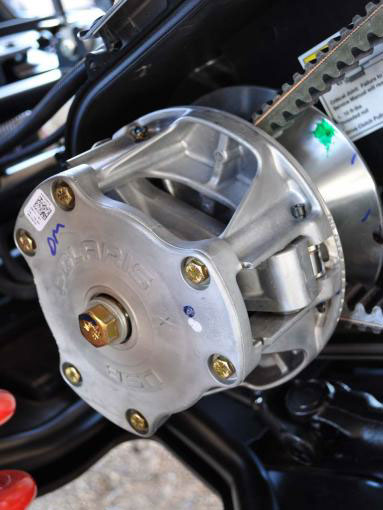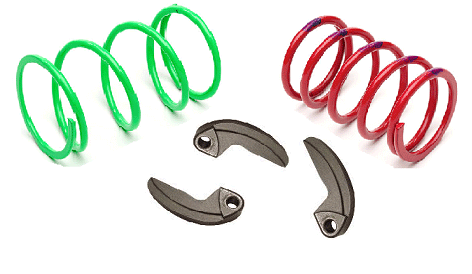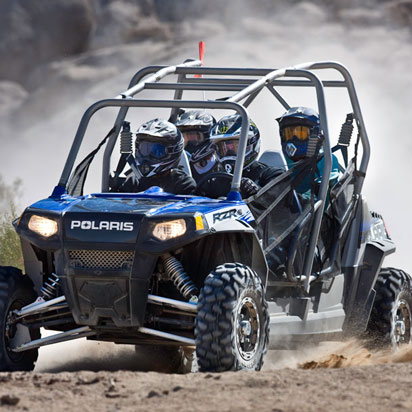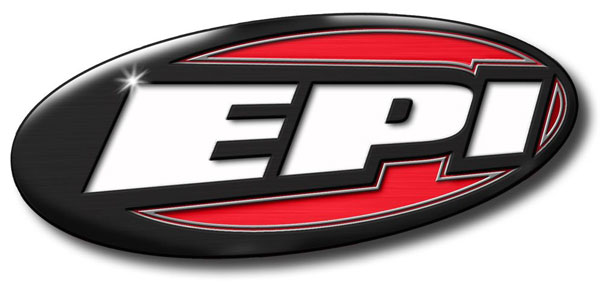Product Review EPI Clutch Kit for Polaris Ranger RZR 4
Hidden Power Via the CVT
by Jason Giacchino

A few years ago there was a rift between ATV and snowmobile transmissions hence the aftermarket clutch kits that have been popular with sled enthusiasts really had no place in the quad world. Then with the advent of CVT (continuously variable) automatic transmissions becoming a staple of both ATVs and UTVs, such kits became essential for maximizing power output.
EPI has been around since the snowmobile days. When it comes to extracting maximum performance from a CVT, they have more than a few techniques up their collective sleeve. We had heard great things about their Polaris RZR clutch kits, so when our local dealer called to let us know they were about to install one, it was only natural for us to jump at the chance to check it out in action.
Background Check
Contrary to common misconception, clutch kits don’t only benefit machines that have been extensively modified. Sure their quintessential if you have built up your ATV and wish to make maximum usage of your increased power, but the fact of the matter is that stock clutches are designed for “meat of the curve” usage. What this means is that the manufacturers don’t know how much you and your passengers weigh, nor do they have the slightest idea what you intend to do with your machine. For every individual who is drag racing their UTV, another may be traversing a mud pit, or another still towing a tree. So what they end up doing to compensate for this lack of data is install a clutch designed to do a little bit of everything (even if it fails to make maximum use of the engine’s power output).
The RZR 4 in question had an aftermarket exhaust system and air intake, but was otherwise bone stock. Its owner was hoping to increase acceleration response without sacrificing reliability (or performing costly internal engine upgrades).
The Kit

EPI’s Polaris Ranger RZR 4 clutch kit will set a buyer back 9. It consists of a pair of springs and three flywheel weights. They do offer kits that also include belts, but that wasn’t necessary in this situation. Glancing at EPI’s ever-expanding application charts reveals a whole plethora of factors to consider in selecting the proper kit for your needs. Aside from the obvious make/model data, wheel/tire size is necessary, elevation, as well as intended application – be it mud use, top speed, sand, economy (to increase overall performance) and so on.
Our particular kit could be found under the Sport Utility category of the Polaris models on EPI’s chart. It is described there as follows:
Best All-Around Use Kit
• Great for trail riding, occasional mud and sand riding, plowing and hauling
• Makes up for power loss and slow response of adding oversized tires
• Better low end and midrange acceleration
• Quicker backshift which results in crisp throttle response
• Reduces belt slip and clutch heat
Installation
We understand trepidation when it comes to the idea of doing modifications to one’s UTV clutch system, but can attest to the fact that EPI really takes the guess work out of the equation. For starters the included instructions are concise and thorough. And though they lack photos for reference, they are written out in such a way that a backyard mechanic with even moderate skill should have no trouble grasping them.
Secondly, once you remove the machine’s clutch cover, the system is actually quite easy to understand (save yourself a lot of grief by remembering the primary clutch on the RZR 4 is on the passenger side). The bad news is we wouldn’t attempt this job without a clutch compression tool, which allows one person to compress clutches for service work, remove and install helixes, change springs and maintenance. They aren’t cheap. Our dealer had one, obviously, but there’s a good chance you do not. EPI will gladly sell you one when you order your kit for .95.
The Ride

We’ll be honest, considering this kit only swapped two springs and a few flywheels, we didn’t expect the gains to be as pronounced as they proved. The RZR 4 engaged with more authority, accelerated quicker, and felt much less restricted just about everywhere in the power spread. Since the clutch allows for earlier activation, the point of engagement feels more instantaneous and less “spooled”. Top speed numbers were unaffected but reaching the top speed was certainly more authoritative. We were really impressed with its newfound pep on steep, punchy hills that would normally bog the stocker down.
Conclusion
We are thoroughly convinced that no other modification for 0 could yield the type of performance gains that can be had by the EPI clutch kit. Most riders begin with the exhaust system for noticeable power gains; this modification not only proved far less labor intensive, but it did so at merely a fraction of the cost. Best of all, rather than jeopardize reliability by pushing the performance envelope beyond the designers’ intentions, a clutch kit simply makes more efficient use of the power already on tap.
The only conceivable downside is that the lack of a spring compressor in many workshops will add expense to the equation, either by forcing the purchase of the tool or taking the machine to a shop that has one. Even so, as a sub 0 modification, this one is well worth it, and in that case, the puller would be there should you ever need it in the future.
Contact

